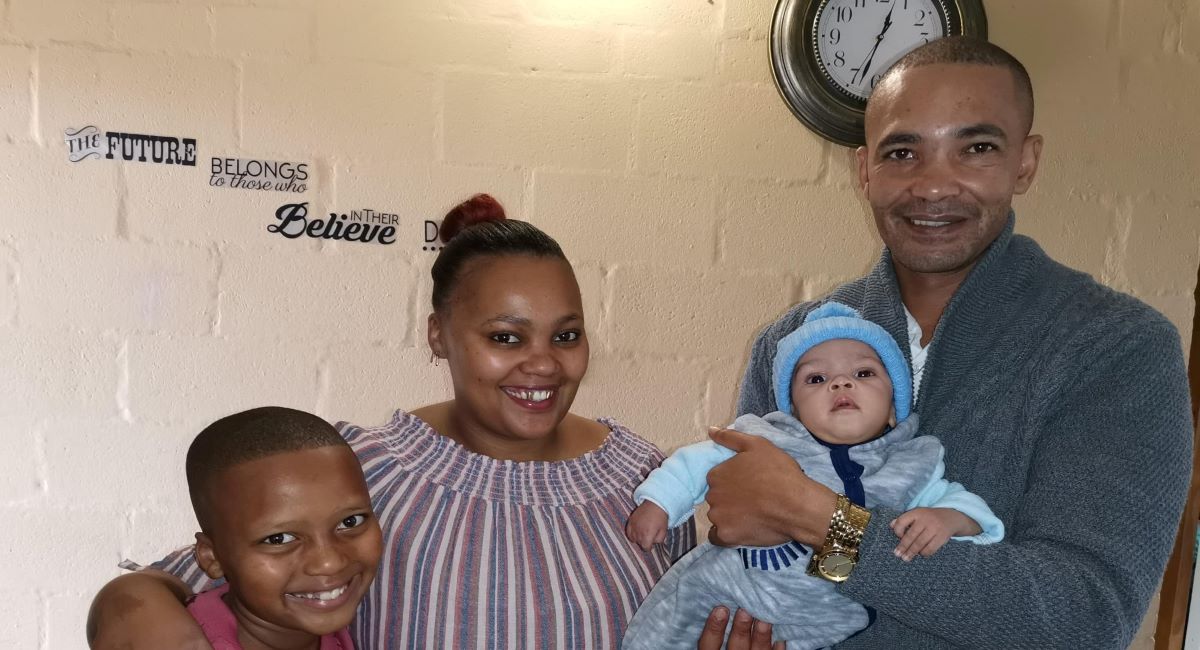Baby Ephraim Maleho is a reminder of the value of life, and it was the amniotic sac from his mother’s complex Caesarean delivery that helped give him that miracle of life. According to Times Live, Ephraim was born at 38 weeks with some of his organs outside of his abdomen, a condition called exomphalos. It took 100 days in the neonatal intensive care unit at Netcare Blaauwberg Hospital in Cape Town, South Africa, but thanks to some excellent doctors and some innovative thinking, Ephraim made it.
Dr. Ricky Dippenaar, a senior neonatologist at the hospital, specializes in helping struggling babies thrive. As his webpage explains, “Dr. Dippenaar works to establish guidelines and techniques that continue to push the boundaries in managing the challenges facing preterm infants in his units.”
One way in which Dr. Dippenaar managed to push those boundaries with baby Ephraim is by using the amniotic sac from Ephraim’s own mother to give protection to the baby’s protruding organs and keep him from infection — which sounds instinctive, and, indeed, is.
READ: Dedicated medical team braved historic Texas storm to save NICU preemie
As Dr. Dippenaar explained to the Times, “It seemed logical to use the very membrane that protected baby Ephraim inside the womb as a natural barrier. This membrane is known to contain a number of healing cytokines and essential growth factors and help reduce pain. It also has anti-bacterial properties, and reduces inflammation and scar tissue.”
Science Daily defines the amniotic sac in part as “[a] tough but thin transparent pair of membranes, which hold a developing embryo (and later fetus) until shortly before birth.” The page adds, “It is also called the amniotic bubble because of its resemblance to a bubble,” reminding readers of the description of baby Ephraim’s organs being born outside his body in a bubble-like sac.
Dr. Dippenaar said, “The amniotic tissue incorporated well, reinforcing the bubble of tissue around Ephraim’s organs, which then underwent a transformation and started contracting.” He explained that this process was needed initially because “[Ephraim’s] intestines and organs could not simply be moved into the position they would usually be in. We needed time for the skin to grow to make enough space in his tummy.” Over the course of several months, the amniotic sac slowly shrank and Ephraim’s organs were able to fit inside his body, leaving him ready for a successful reconstructive surgery to close the abdominal wall.
This isn’t the first time that Dr. Dippenaar is credited with helping to save a young baby’s life. His hospital webpage notes that in 2011, he was part of a team that helped deliver the youngest surviving baby on the entire continent.
READ: Baby born at 25 weeks saved by bubble wrap and a plastic sandwich bag
Today, Baby Ephraim is home in Vredenburg, in South Africa, a reminder of the miracle of life — a fact that did not escape his mother, Beneline, who commented to the Times:
We wondered, how can our child live?… Ephraim’s father and I knew there is something special about this child, and even though there were major risks, we would stop at nothing to give him the chance to live… I thanked God every day when I opened my eyes and felt the baby kicking. It was like he was saying, “don’t worry, mommy, I’m fine.”
His father, Melvory van Wyk, praised the doctors, saying, “We were very worried, and we knew it was the start of a long journey. We thank God for sending these angels to look after our son… We want other families to know there are people who understand what it is like to go through a difficult journey like we had with Ephraim, and there is hope. He is our little miracle warrior.”
“Like” Live Action News on Facebook for more pro-life news and commentary!







